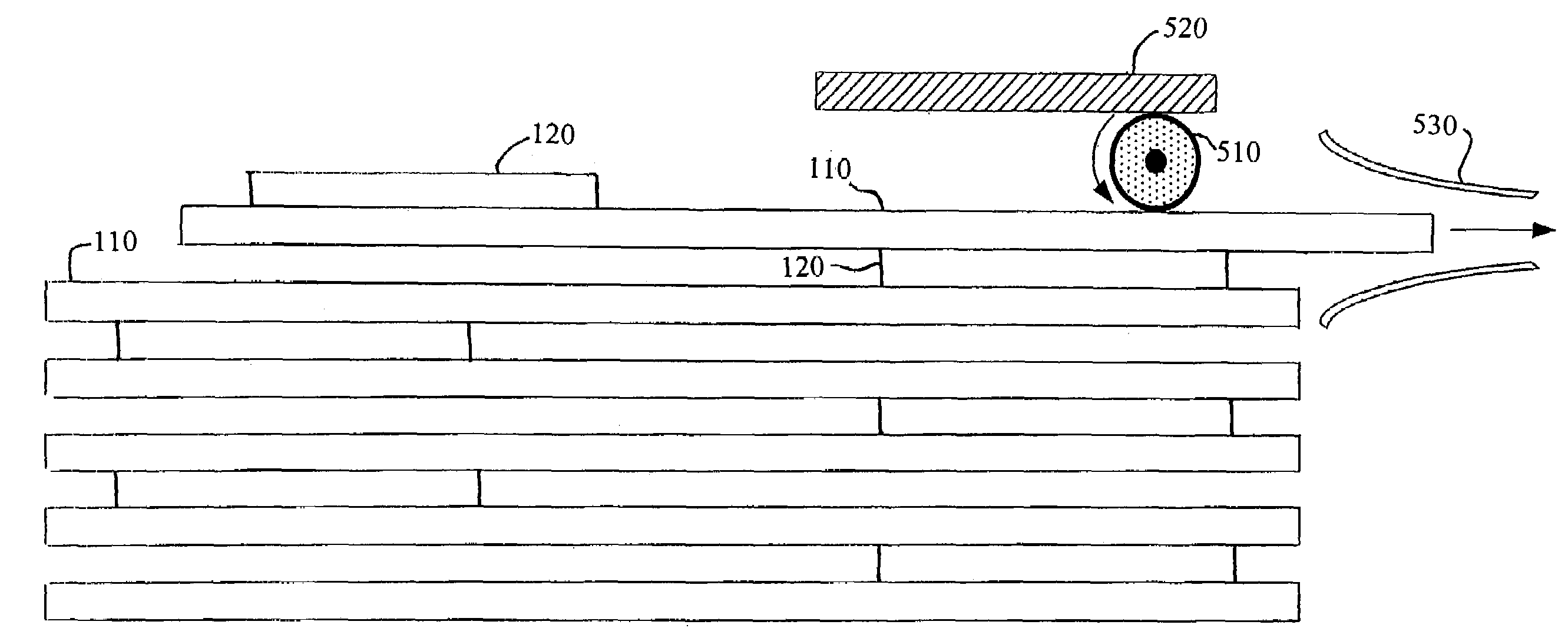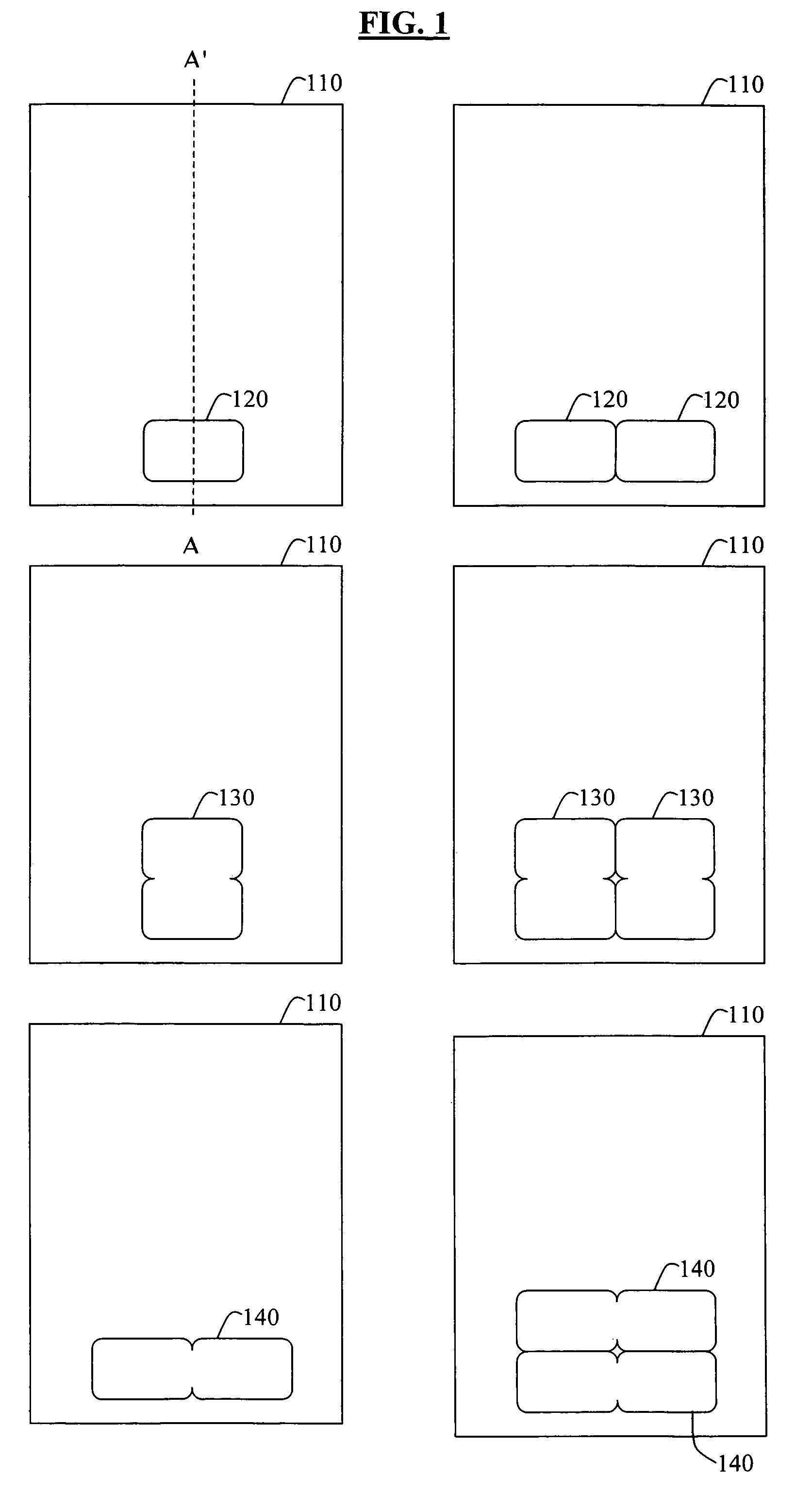System, method, and program for alternating sheets of media
a technology of alternating sheets and media, applied in the field of systems, methods and programs for alternating sheets of media, can solve the problems of sheet slippage, sheet tops falling off the stack, and the performance of conventional media stackers is substantially degraded, so as to reduce the frequency of jams
- Summary
- Abstract
- Description
- Claims
- Application Information
AI Technical Summary
Benefits of technology
Problems solved by technology
Method used
Image
Examples
Embodiment Construction
[0039]FIG. 1 shows some exemplary configurations of the above-described combined, multi-thickness media. The media may include a standard-sized large sheet of media 110 (hereinafter the “large media”) and at least one of a small media 120 for single-side printing, a small media 130 which may be folded along a long axis to approximate double-side printing, and / or a small media 140 which may be folded along a short axis to approximate double-side printing.
[0040]FIG. 2 shows an exemplary configuration of multi-thickness media in cross-section. Specifically, FIG. 2 shows a cross-section through line A-A′ in FIG. 1, of a combined multi-thickness media including a large sheet of media 110 and a small media 120 for single-side printing. As shown in FIG. 2, the combined multi-thickness media is thicker, in a direction of line B-B′, in a portion corresponding to the small media 120. The combined multi-thickness media is thinner, in a direction C-C′, in a portion corresponding to only the lar...
PUM
 Login to View More
Login to View More Abstract
Description
Claims
Application Information
 Login to View More
Login to View More - R&D
- Intellectual Property
- Life Sciences
- Materials
- Tech Scout
- Unparalleled Data Quality
- Higher Quality Content
- 60% Fewer Hallucinations
Browse by: Latest US Patents, China's latest patents, Technical Efficacy Thesaurus, Application Domain, Technology Topic, Popular Technical Reports.
© 2025 PatSnap. All rights reserved.Legal|Privacy policy|Modern Slavery Act Transparency Statement|Sitemap|About US| Contact US: help@patsnap.com



